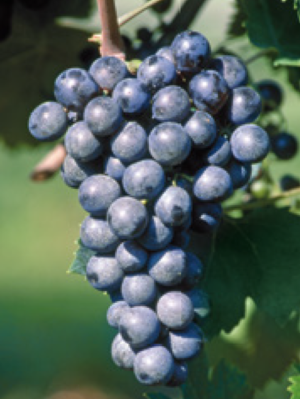 DELIVERY FROM £4.95
DELIVERY FROM £4.95 FREE DELIVERY FOR ORDERS OVER £100
FREE DELIVERY FOR ORDERS OVER £100Home » Community » Wine and Grape Guide » Uva di Troia

Uva di Troia - also known as Nero di Troia - is one of the most distinctive and historic red grape varieties of southern Italy, particularly renowned in the Puglia region. Its evocative name, which translates as “Grape of Troy,” suggests a legendary origin tracing back to the ancient city of Troy in Asia Minor. According to some theories, the grape may have been introduced to Italy by Greek colonists who founded the Apulian town of Troia in the province of Foggia. Other scholars propose an alternative Albanian origin, linking it to the city of Cruja, highlighting the grape’s long and fascinating journey across the Mediterranean.
Today, Uva di Troia is cultivated primarily along the northern coast of Puglia, especially in the areas surrounding Barletta, Andria, Foggia, and Bari. It thrives in the region’s warm, sun-drenched climate and benefits from the cooling influence of sea breezes. While it is widely planted, not all Uva di Troia is the same, there are at least two main biotypes: one producing larger, more loosely packed clusters, and another known locally as Carmosina, which yields smaller, more compact bunches and is considered superior in terms of wine quality.
The grape is black-skinned, medium-sized, and spheroid, with thick, leathery, violet-colored skin covered in a light bloom. The bunches are typically large, pyramidal in shape, either simple or winged, and moderately compact. The leaves are medium, pentagonal, and five-lobed. Uva di Troia is a vigorous vine that adapts well to a variety of training systems and soil types, making it a versatile choice for growers. It ripens in mid to late season and offers medium productivity, with consistency in both yield and quality.
Wines made from Uva di Troia are deeply coloured, often ruby red with violet reflections. Aromatically, they are expressive and generous, with intense notes of violets, blackberries, and licorice, along with hints of spice and dried herbs. On the palate, Uva di Troia wines are typically dry, full-bodied, and well-structured, with a firm tannic backbone, vibrant acidity, and a pleasant warmth from moderate to high alcohol content. These qualities give the wine great aging potential, as well as versatility when paired with hearty dishes, such as roasted meats, aged cheeses, and rich pasta sauces.
Uva di Troia is the backbone of several key DOC wines in Puglia, including Castel del Monte and Rosso Barletta, and plays an essential role in showcasing the region’s winemaking identity.



Before we say ciao, why not join our newsletter & stay up to date on everything happening on planet Italyabroad.com